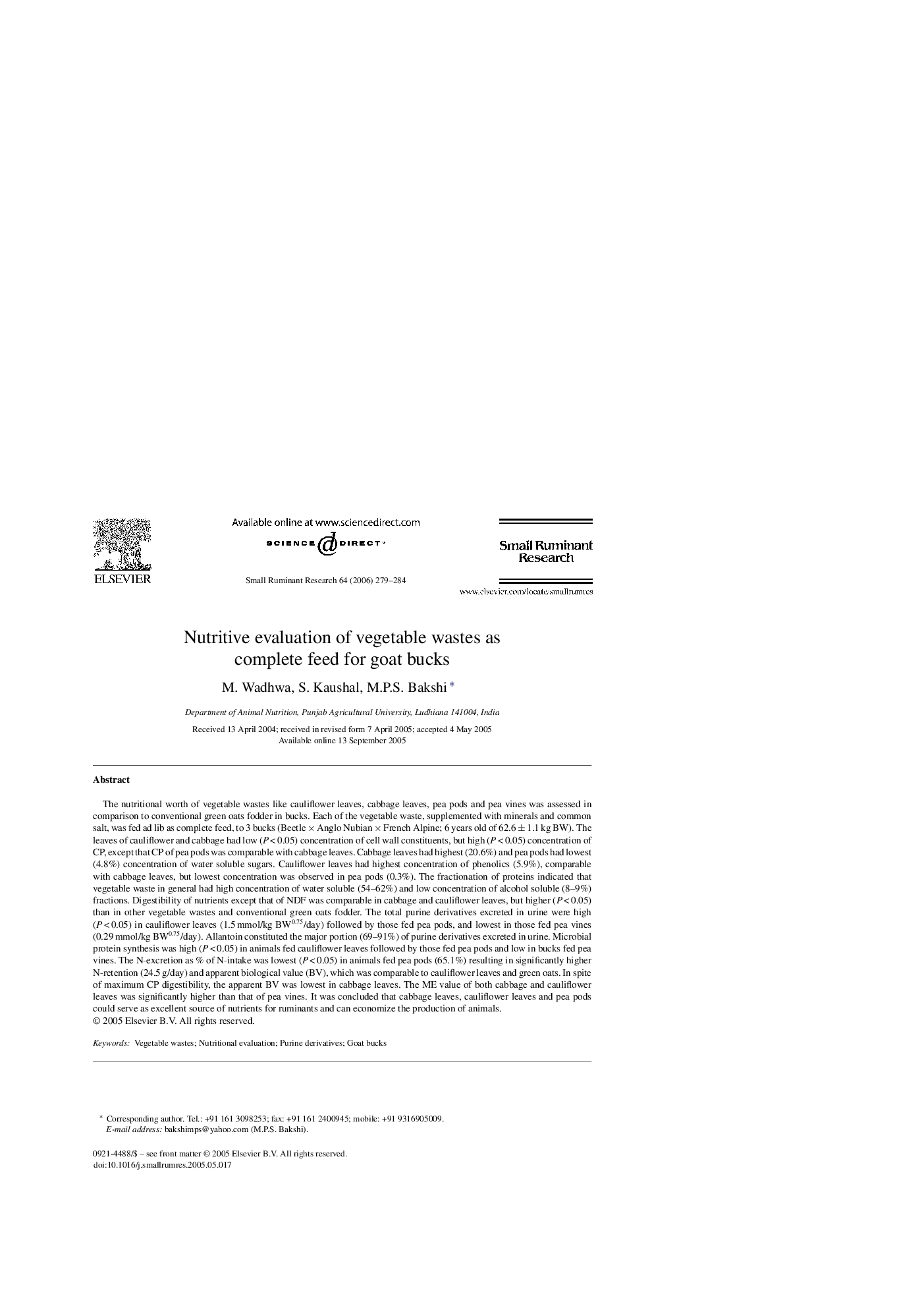| کد مقاله | کد نشریه | سال انتشار | مقاله انگلیسی | نسخه تمام متن |
|---|---|---|---|---|
| 2458474 | 1110757 | 2006 | 6 صفحه PDF | دانلود رایگان |

The nutritional worth of vegetable wastes like cauliflower leaves, cabbage leaves, pea pods and pea vines was assessed in comparison to conventional green oats fodder in bucks. Each of the vegetable waste, supplemented with minerals and common salt, was fed ad lib as complete feed, to 3 bucks (Beetle × Anglo Nubian × French Alpine; 6 years old of 62.6 ± 1.1 kg BW). The leaves of cauliflower and cabbage had low (P < 0.05) concentration of cell wall constituents, but high (P < 0.05) concentration of CP, except that CP of pea pods was comparable with cabbage leaves. Cabbage leaves had highest (20.6%) and pea pods had lowest (4.8%) concentration of water soluble sugars. Cauliflower leaves had highest concentration of phenolics (5.9%), comparable with cabbage leaves, but lowest concentration was observed in pea pods (0.3%). The fractionation of proteins indicated that vegetable waste in general had high concentration of water soluble (54–62%) and low concentration of alcohol soluble (8–9%) fractions. Digestibility of nutrients except that of NDF was comparable in cabbage and cauliflower leaves, but higher (P < 0.05) than in other vegetable wastes and conventional green oats fodder. The total purine derivatives excreted in urine were high (P < 0.05) in cauliflower leaves (1.5 mmol/kg BW0.75/day) followed by those fed pea pods, and lowest in those fed pea vines (0.29 mmol/kg BW0.75/day). Allantoin constituted the major portion (69–91%) of purine derivatives excreted in urine. Microbial protein synthesis was high (P < 0.05) in animals fed cauliflower leaves followed by those fed pea pods and low in bucks fed pea vines. The N-excretion as % of N-intake was lowest (P < 0.05) in animals fed pea pods (65.1%) resulting in significantly higher N-retention (24.5 g/day) and apparent biological value (BV), which was comparable to cauliflower leaves and green oats. In spite of maximum CP digestibility, the apparent BV was lowest in cabbage leaves. The ME value of both cabbage and cauliflower leaves was significantly higher than that of pea vines. It was concluded that cabbage leaves, cauliflower leaves and pea pods could serve as excellent source of nutrients for ruminants and can economize the production of animals.
Journal: Small Ruminant Research - Volume 64, Issue 3, August 2006, Pages 279–284